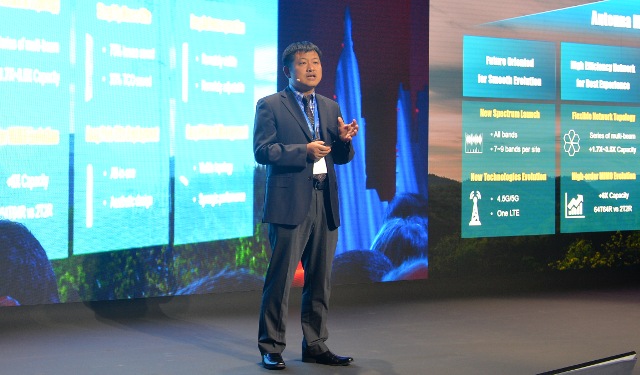Antenna Modernization Makes Paris Debut at 5th Annual Global Antenna and AAU Forum
[Paris, France, October 17, 2016] The 5th Global Antenna and Active Antenna Units (AAU) Forum held in Paris, attracted more than 180 guests from global operators to third-party industry organizations with the main theme of ‘Antenna Modernization, Inspiring the Giga Mobile Evolution.’
During the forum, Dr. Peter Zhou, Chief Marketing Officer of Huawei Wireless Product Line, delivered a keynote which outlined the strategic developments necessary for today’s mobile broadband (MBB) networks by redefining antenna modernization to satisfy the ever increasing demand for mobile data.
According to Dr. Zhou, the explosive emergence of various applications in the future encourages the modern antenna system to feature maximized network efficiency, simplified site structure, and efficient operations and maintenance (O&M), which promises to become the future-oriented evolutionary trend of MBB networks.

The future-oriented modern antenna system lays a solid foundation for MBB development facilitating smooth network evolution. Due to space becoming more and more limited, only one or two antennas can be deployed for each sector. These antennas must support new spectrums and adopt new technologies in order to maximize functionality on more frequency bands. In addition, they should accommodate next generation communication standards from 4G to 4.5G and well into 5G. Of course, the maximization of spectrum efficiency should come without any size modifications, satisfying the growing requirements of future network development, maximizing network efficiency and significantly improving the user experience. With ‘Zero New Spectrum, Zero New Sites’, multi-sector networking has become the most effective way to reuse spectrum resources and improve network capacity.
In fact, every series of antennas including multi-beam and hybrid-beam antennas allow large-scale deployment of multi-sector technologies, achieving more flexible network topologies. As key to enhancing spectral efficiency, high-order (multiple-input, multiple-output) MIMO will become a technology of choice for MBB networks of the future. Antenna systems supporting 4T4R, massive MIMO, and antenna system supports multiple frequency bands including 1.8 GHz, 2.1 GHz, and 2.6 GHz pave the way for future network development.
Antenna modernization can also significantly simplify site architecture and lower total cost of ownership (TCO). Highly integrated and environment-friendly active antennas meet diverse site densification requirements, reducing the number of highly-integrated macro AAUs by 75% and TCO by 30% as well as simplifying macro site deployment.
A practical and successful example of this is Huawei’s EasyMacro, which provides an effective way for densely deploying pole-mounted sites due to its advantages, including easy site acquisition and quick deployment. Moreover, antenna modernization can achieve efficient O&M through the adoption of digital antenna systems which can be monitored, operated, and maintained remotely. They also support self-organizing networks (SON), increasing network planning and optimization efficiencies, delivering efficient and intelligent O&M experience.
Dr. Zhou said, "Huawei is continuously focusing on challenges confronting operators and their requirements in the MBB era. We are committed to the establishment of deep cooperative relationships with industry partners to redefine antenna systems and deploy leading MBB networks for business success."

